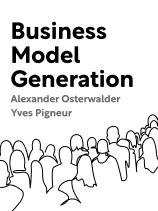

This article is an excerpt from the Shortform book guide to "Business Model Generation" by Alexander Osterwalder and Yves Pigneur. Shortform has the world's best summaries and analyses of books you should be reading.
Like this article? Sign up for a free trial here .
What is the advertising revenue model? How do digital businesses make profits from advertising?
The advertising business model is where a business makes revenue from selling advertising space to other businesses. This model is particularly common amongst digital platforms and popular websites because this model requires high traffic volume to generate meaningful revenue.
In this article, we’ll take a look at the advertising revenue model and how it generates revenue.
What Is the Advertising Revenue Model?
In the advertising revenue model, businesses encourage advertisers to subsidize free users of their services. For example, the revenue that Google receives from advertisers enables Google users to make unlimited searches for free. The more free users, the more advertisers are willing to pay to access these users.
In their book Business Model Generation, business innovation experts Osterwalder and Pigneur suggest the following priorities for free business models subsidized by advertising revenues:
| Customer Groups | Focus on large customer groups to entice advertisers. |
| Value Offer | Value comes from providing a free product or service to customers. The resulting customer base will create value for advertisers. |
| Touchpoints | Depends on the type of product or service. |
| Interactions | Depends on the type of product or service. |
| Profit Sources | Profit comes from advertisers using the platform. |
| Resources | The larger the platform becomes, the more of a resource it will become. |
| Critical Actions | Develop and maintain the platform to entice both customers and advertisers. |
| Network | Focus on developing partnerships that will make the platform more functional or attractive to all customer groups. |
| Expenses | Platform management and development, as well as traffic generation, will incur the highest costs. |
Case Study: Facebook’s Advertising Revenue
Facebook’s family of apps (Instagram, Messenger, Whatsapp) provides a free service to more than 3 billion users worldwide. Facebook clearly has two primary groups of customers: Users, who they provide value for in the form of free communication, and advertisers, who they rely upon for revenue.
Facebook collects and analyzes data to categorize each of its users: who they are, what they care about, who they communicate with, and what content they spend time on both within and outside of Facebook apps. The more time that users spend on Facebook apps, the more data Facebook collects to categorize these users.
Facebook auctions off advertising space within users’ feeds and stories based on the categorizations they’ve created. Further, Facebook provides advertisers with performance tracking data on how effective different campaigns are, for example, how often users click on certain advertisements. These categorizations and performance analyses are accurate enough that advertisers are willing to pay for the opportunity to create targeted marketing campaigns. In fact, over 10 million advertisers use Facebook’s advertising platform.
Facebook’s 2020 revenue: On average, Facebook earned an average of $32 from each of its users, totaling $84.2 billion in advertising revenue—advertising represented 98% of Facebook’s $86 billion revenue for that year alone.
Facebook has faced many accusations regarding the way it manages the security and privacy of its users. However, Facebook doesn’t sell personal data to advertisers—just advertising space based on user demographics. Still, the increasing scrutiny of the government and public demonstrates that applications of this Free model may need to change in the future.

———End of Preview———
Like what you just read? Read the rest of the world's best book summary and analysis of Alexander Osterwalder and Yves Pigneur's "Business Model Generation" at Shortform .
Here's what you'll find in our full Business Model Generation summary :
- The nine elements that make up any successful business model
- Different ways you can combine these elements to create business model patterns
- Techniques you can use to generate innovative ideas






